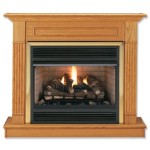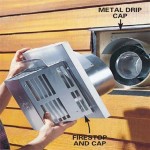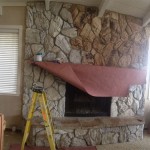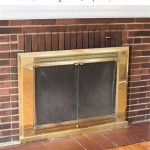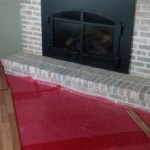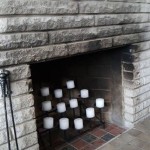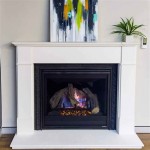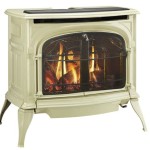How Do Ventless Gas Fireplace Logs Work?
Ventless, or vent-free, gas fireplace logs offer a convenient and aesthetic alternative to traditional wood-burning fireplaces or vented gas log systems. They provide the ambiance of a fire without the need for a chimney or flue, making them suitable for a wider range of homes and spaces. Understanding how these systems function is crucial for safe and efficient operation. The core principle behind ventless gas fireplace logs revolves around highly efficient combustion and sophisticated safety mechanisms designed to prevent the buildup of harmful gases within the living space.
Unlike traditional fireplaces that exhaust combustion byproducts, ventless systems are designed to burn fuel so cleanly that the output meets stringent indoor air quality standards. This is achieved through a combination of advanced burner technology, precise gas-to-air mixture control, and catalytic converters in some models. While they offer advantages in terms of installation flexibility and heat efficiency, their operation needs careful attention to manufacturer guidelines and local regulations.
Efficient Combustion Process
The effectiveness of ventless gas fireplace logs hinges on complete and efficient combustion. In a typical ventless system, natural gas or propane is fed through a control valve to a burner assembly. The burner assembly is meticulously designed to mix the gas with air in a precise ratio, ensuring nearly complete combustion. This careful calibration minimizes the production of carbon monoxide (CO), nitrogen dioxide (NO2), and unburned hydrocarbons – the primary pollutants associated with gas combustion.
The burner design itself plays a vital role. Many ventless logs feature intricate burner patterns that promote even flame distribution and maximize surface area for combustion. These patterns ensure that the gas and air mixture is thoroughly burned, reducing the likelihood of incomplete combustion and subsequent pollutant formation. Some systems also incorporate specialized burner coatings or materials that enhance combustion efficiency and durability.
Catalytic converters are often integrated into ventless log systems to further reduce emissions. These converters contain precious metals, such as platinum or palladium, that act as catalysts to oxidize any remaining unburned hydrocarbons and carbon monoxide into carbon dioxide and water vapor. This catalytic process significantly lowers the overall emission levels, ensuring the logs meet the required safety standards for indoor use.
Safety Mechanisms
Given that ventless gas fireplace logs operate within a living space without direct ventilation, safety is paramount. These systems incorporate several critical safety mechanisms designed to prevent hazards associated with gas leaks, incomplete combustion, and oxygen depletion. These mechanisms are typically mandated by safety standards organizations like the American National Standards Institute (ANSI).
One of the most crucial safety features is the Oxygen Depletion Sensor (ODS). The ODS pilot light assembly continuously monitors the oxygen levels in the room. If the oxygen level drops below a predetermined threshold (typically around 18%), the ODS automatically shuts off the gas supply to both the pilot light and the main burner. This prevents the continued operation of the fireplace in conditions where incomplete combustion could lead to dangerous carbon monoxide buildup.
Another essential safety feature is the pressure regulator. This device ensures a consistent and safe gas pressure to the burner assembly, regardless of fluctuations in the main gas line pressure. Maintaining a stable gas pressure is crucial for consistent combustion and preventing over-firing, which could lead to excessive heat and potentially dangerous conditions.
Furthermore, most ventless gas fireplace logs are equipped with a flame failure device. This device continuously monitors the presence of the pilot light flame. If the pilot light is extinguished, whether due to a draft or other cause, the flame failure device immediately shuts off the gas supply, preventing unburned gas from accumulating in the room.
Installation and Operation Considerations
While ventless gas fireplace logs offer installation advantages, proper installation and operation are crucial for their safe and efficient performance. Installation must adhere to manufacturer specifications and local building codes. This includes ensuring proper clearances from combustible materials, verifying the gas line pressure, and properly connecting the gas supply.
Room size is also a critical factor. Ventless fireplaces are designed for use in adequately sized rooms to ensure sufficient air circulation. Smaller spaces may not have enough ventilation to accommodate the byproducts of combustion, even at low emission levels. Manufacturers typically provide minimum room size requirements based on the BTU output of the log set.
Regular maintenance is essential for maintaining the safety and efficiency of ventless gas fireplace logs. This includes cleaning the burner assembly, inspecting the ODS sensor, and ensuring that the logs are properly positioned according to the manufacturer's instructions. It is also recommended to have the system inspected annually by a qualified technician to identify and address any potential issues.
Finally, the use of a carbon monoxide detector is strongly recommended in any home with a ventless gas fireplace. A CO detector provides an additional layer of protection by alerting occupants to the presence of carbon monoxide, even if the ODS sensor fails to function properly. Position the CO detector according to manufacturer recommendations, typically near sleeping areas.
.aspx?strip=all)
Ventless Fireplaces Explained Safety Of Vent Free Fires

Vented Vs Ventless Gas Logs What S The Difference

How To Select And Install A Gas Fireplace Log Set Fireplaces Direct Learning Center

Vented Vs B Vent Direct Free Dixie S

What You Need To Know About Gas Fireplace Logs Fireplaces Direct Learning Center

Vented Vs Ventless Gas Fireplace Logs

Workings Of A Fireplace Royal Oak Mi Fireside Hearth Home

Vent Free Gas Log Sets A List Of Do S And Don Ts

Are Vent Free Gas Fireplaces Safe Ventless

What You Need To Know About Gas Fireplace Logs Fireplaces Direct Learning Center

